
SHAH ALAM: Firepower Exercise. The Army conducted its annual firepower exercise at Kem Sirajuddin, Gemas today (May 22, 2017). The exercise is the main live firing exercise for the Army, where its heavy hitters worked together with the RMAF fighters to demonstrate its capabilities and firepower.
In the past, the exercise was called a demonstration but this was changed last year to better reflect the main goal of the training exercise.
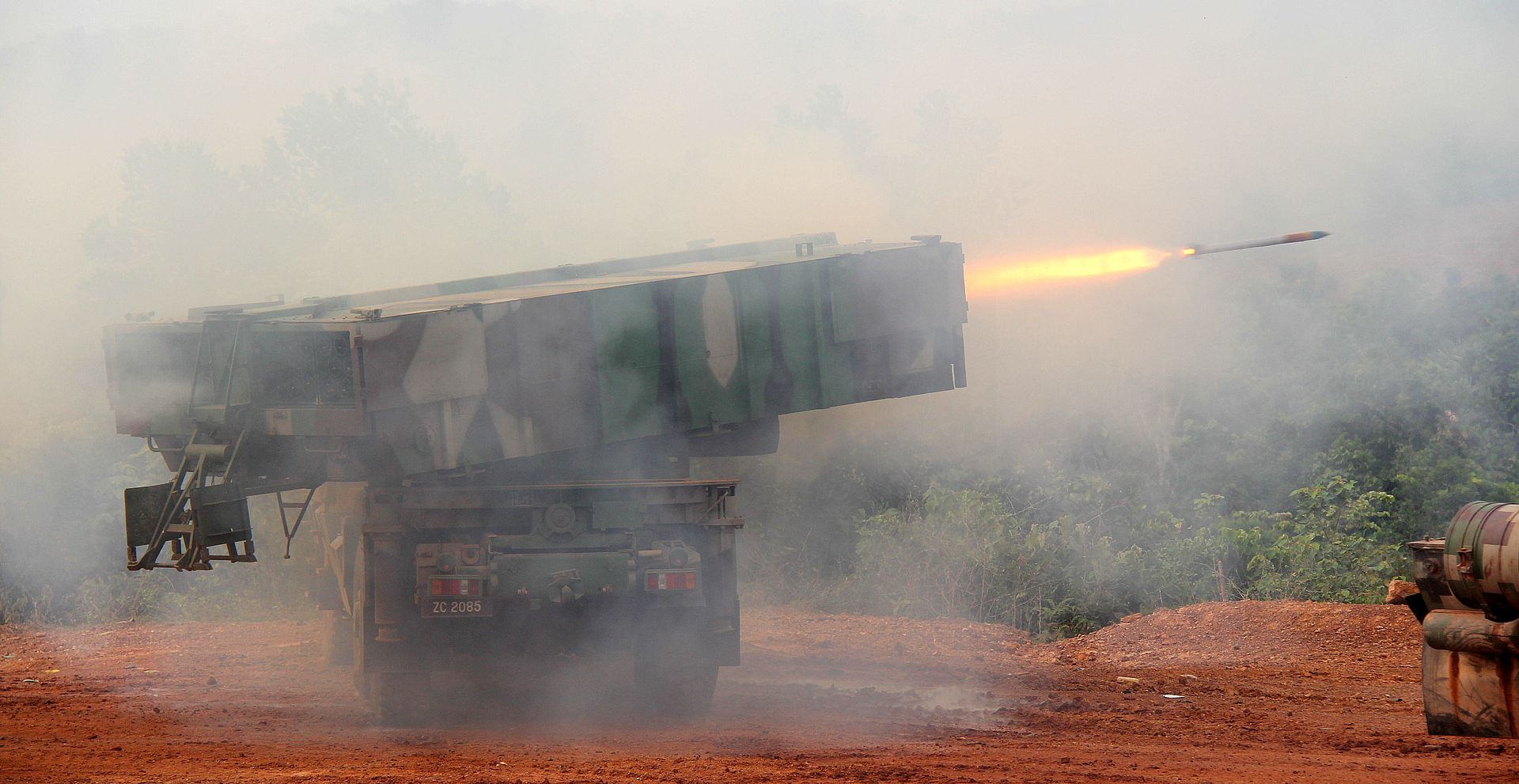
This year’s exercise saw the first public firing of the Gempita AFV30 and Adnan Thales 120mm mortar. Unfortunately, the Armoured Command Variant (ACV) of the Gempita, the one with the RWS, did not take part in the exercise.

Both the AFV30 and the ACV were supposed to conduct a live firing demonstration late last year but it was cancelled for various reasons.

Apart from the AFV30 and the IFV25, none of the other variants of the Gempita took part in the exercise.

Anyhow the Thales 2R2M 120mm mortar are fitted on the ACV-S variant of the Adnan, which eight units were procured back in 2010. The ACV-S variant is, of course, the stretch variant of the Adnan, distinguishable by it’s six road wheels compared to the normal ones with five wheels.

The 2R2m mortar features a semi-auto loading, the loader loads the round and charge on the trunion which in turn place the projectile into the mortar breech. The mortar swivels downwards during travel and the top cover is opened for firing.

The Army Air Wing also demonstrated the AW109 fitted with the minigun, with two examples firing the guns just above the viewing gallery. Last year, only one AW109 took part in the exercise. Two Nuris from the PUTD also took part in exercise hoisting an Oto Melara 105mm pack howitzers in the exercise, compared to one last year.
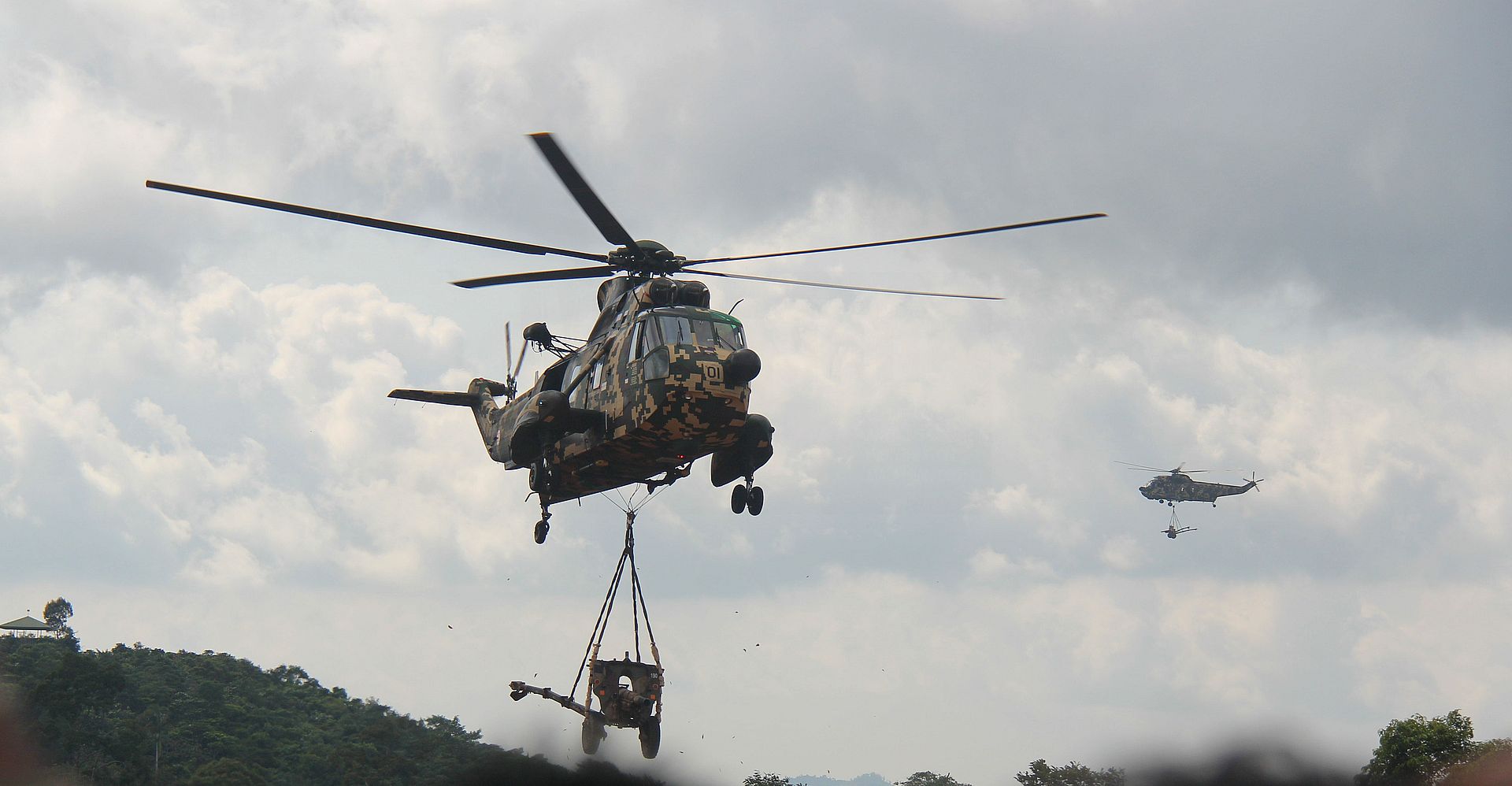
Like in previous years, the Pendekars, Astros MRLS and G5 155mm howitzers took part in the exercise, with a company from the 19th RMR (Mechanised) demonstrating the firing of infantry weapons from M4s to RPG-7s after they exited from their Adnans from the 25mm Bushmaster, 81 mortar and 40mm AGL variants. These vehicles also added to the din firing their weapons as part of the exercise.

As for the anti-tank contingent, the Metis M – fitted on G-wagens and Bakhtar Shiktan on Adnans also took part in the exercise.

The Metis-M scored direct hits on their targets from four missiles while the Bakhtar Shiktan missed theirs, a reversal of fortunes from 2014, the last time I went to see the firepower exercise.

For the indirect firing portion of the exercise, three F/A-18D Hornets and two BAe Systems Hawk 108s were involved together with the Army’s heavy hitters firing in their more traditional fire support role. Because of this the guns, the G5 155mm, 81mm mortars and 105 hotwizers, were firing away from the gallery.
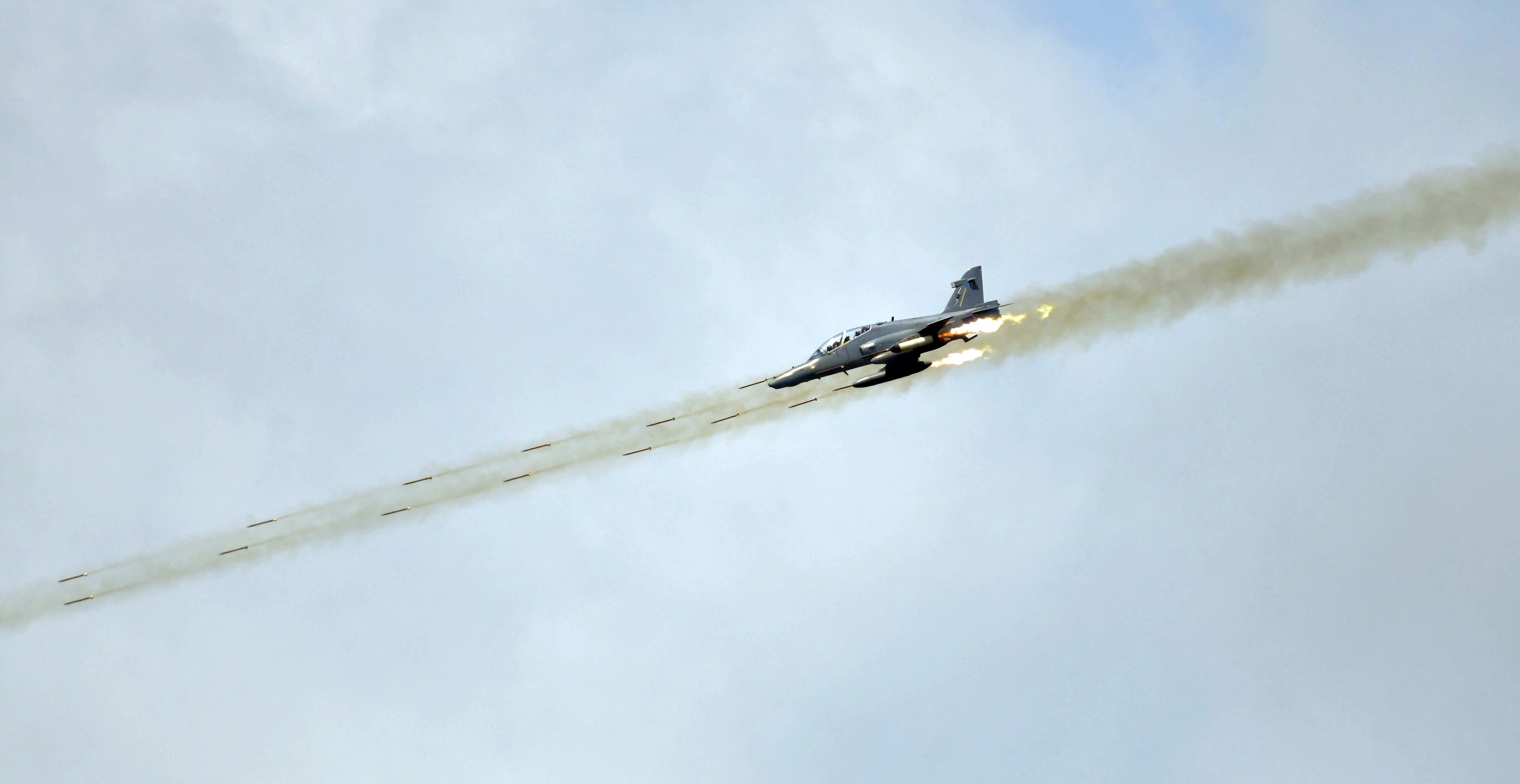
The Hornets, two of them were fitted with four Mk82 500-pound bombs each, while the Hawks were fitted with two launchers for FZ rockets each.
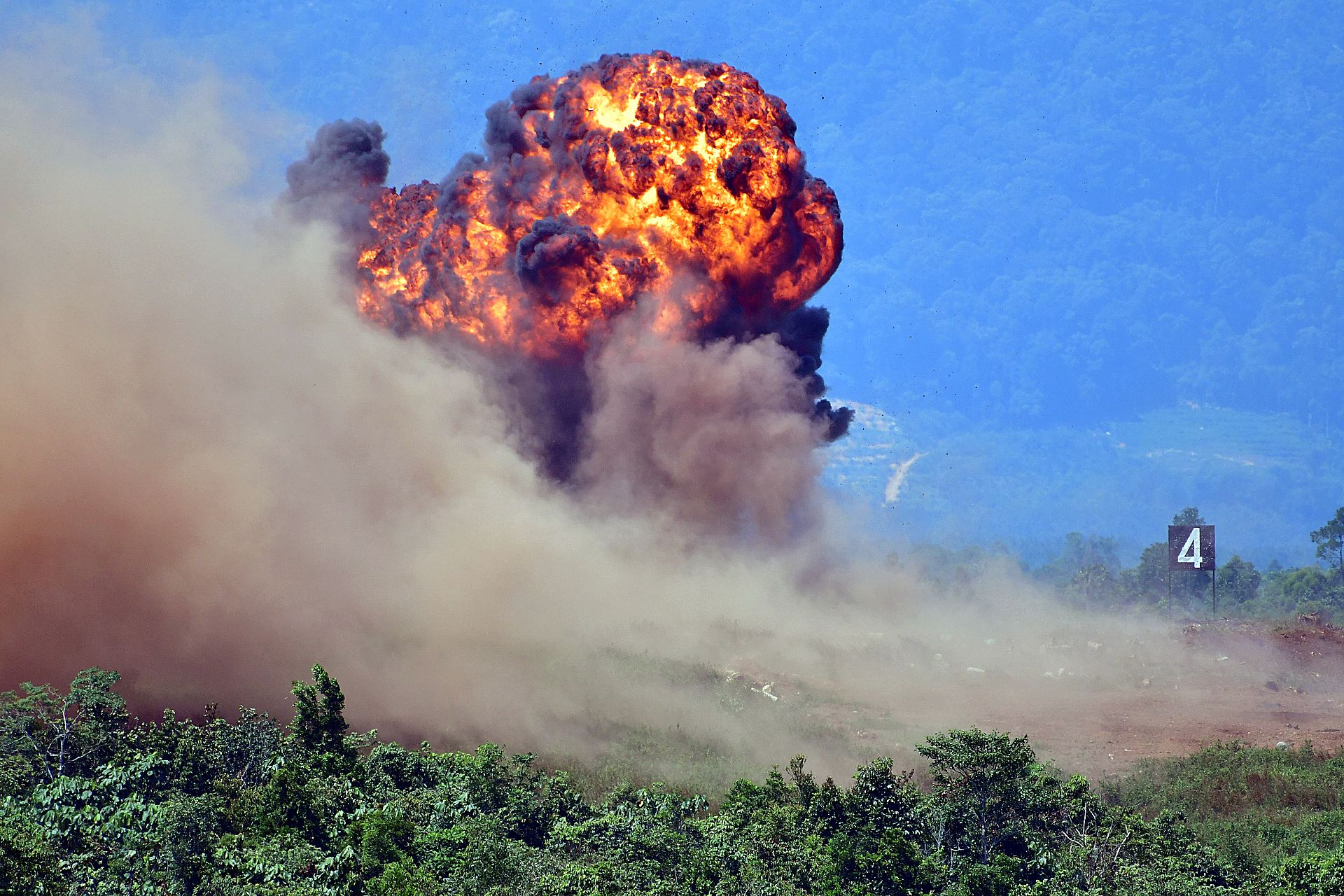
The fighter boys apparently had a much enjoyable time at the exercise with one of the Hawks flying just over the tree-tops as they exited the range for the finale. Both Hawks performed aileron rolls as they past the view gallery.
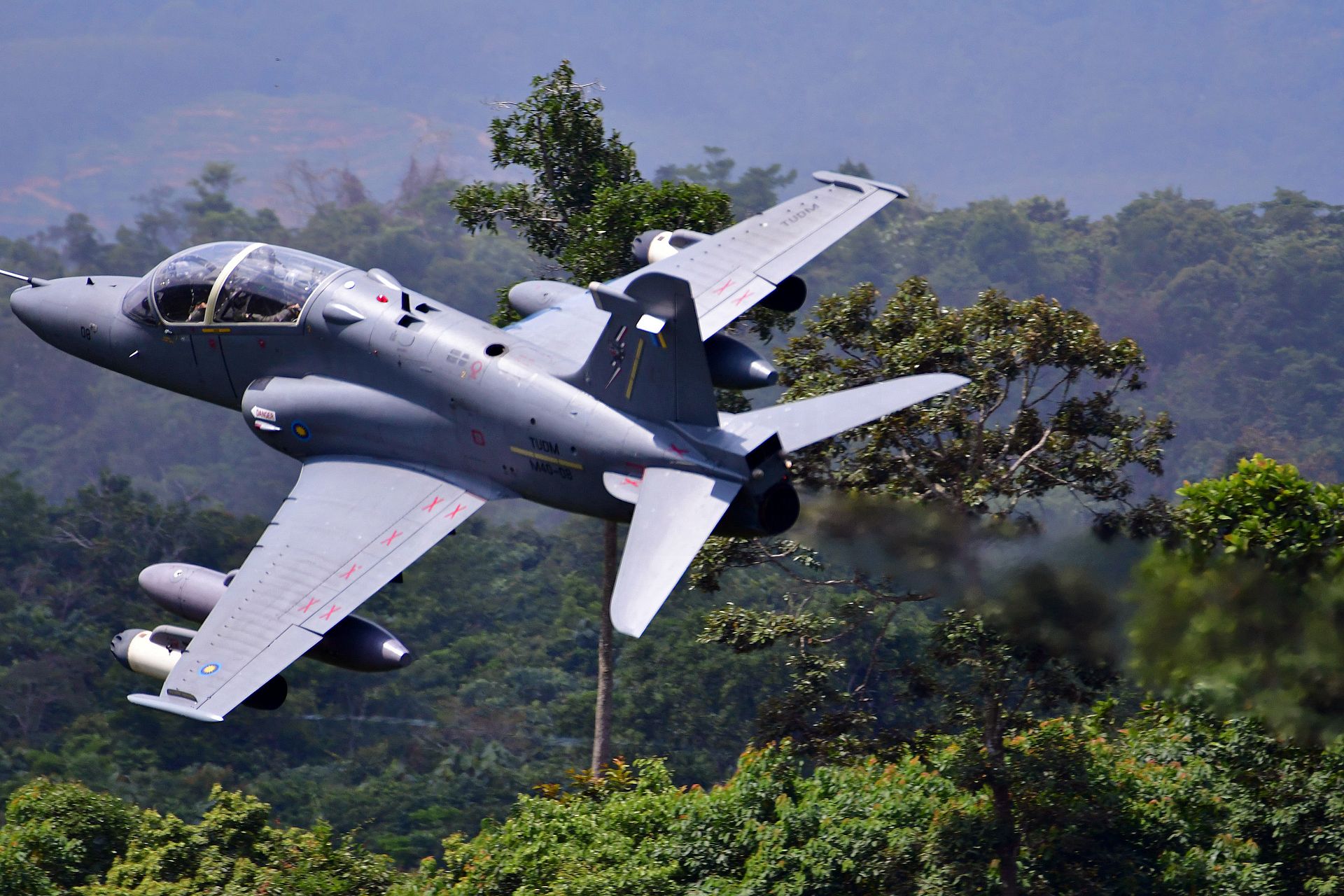
— Malaysian Defence
If you like this post, buy me an espresso. Paypal Payment


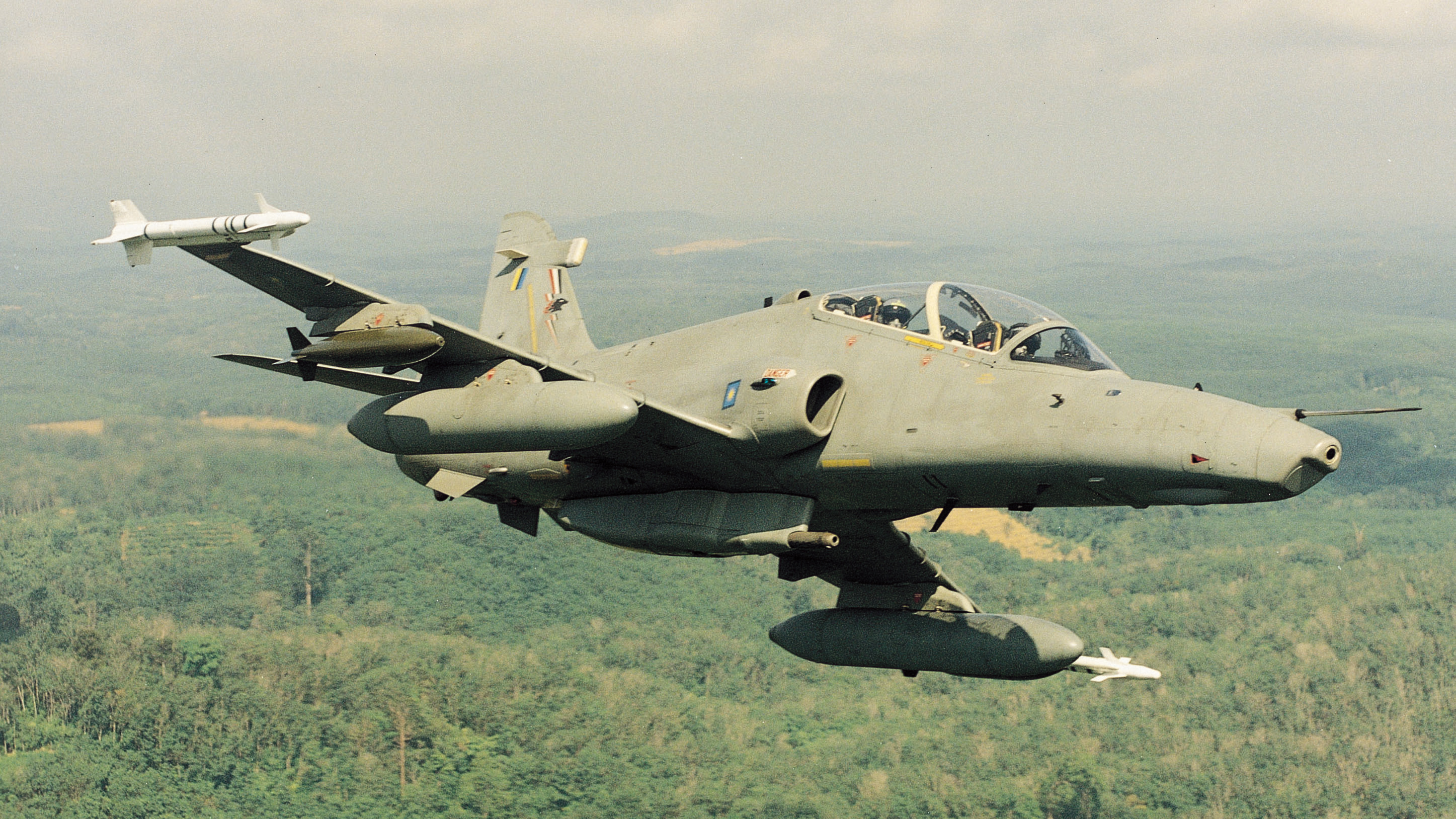
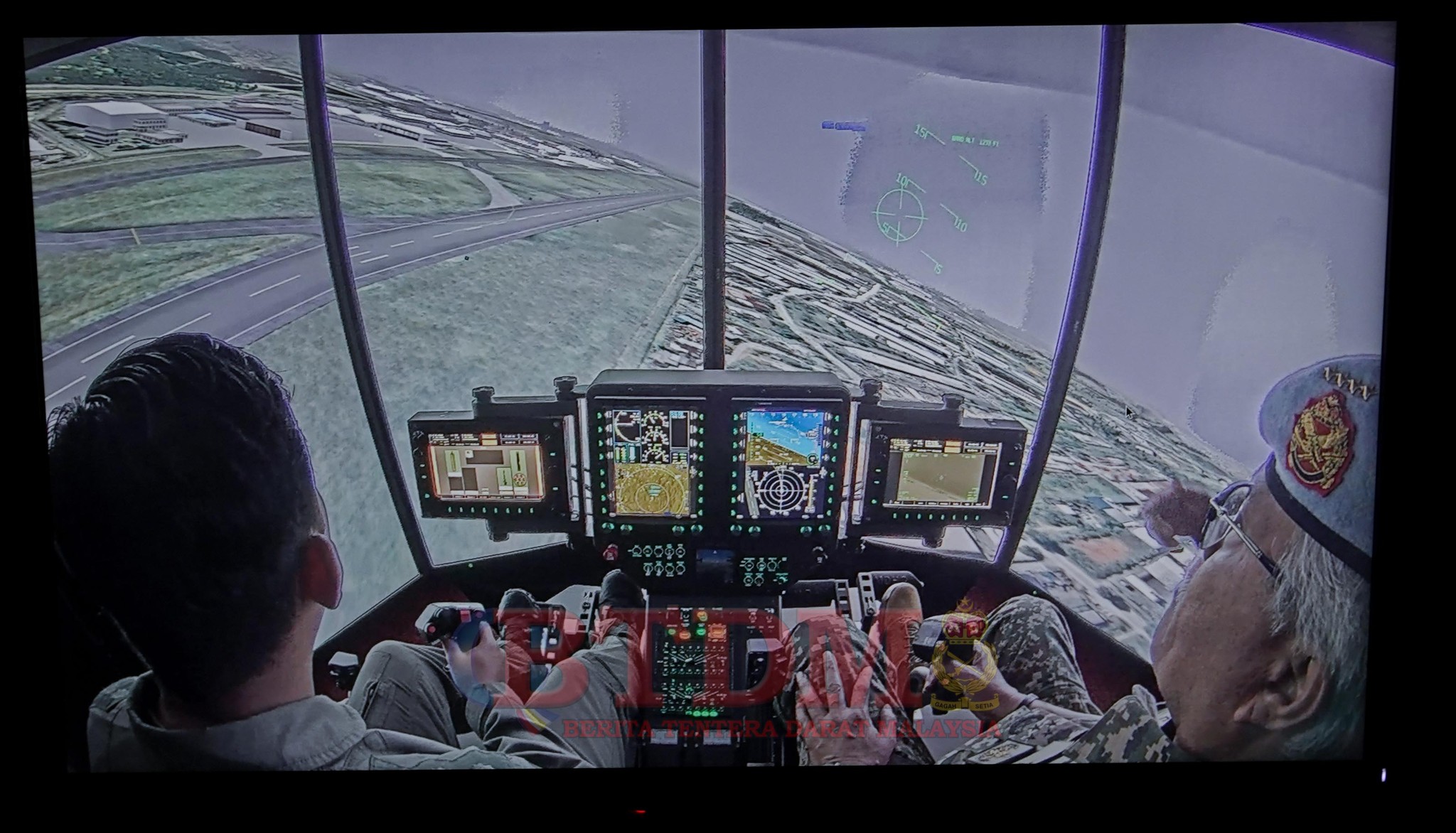
Beautiful photography, especially the Hawk.
I believe thats a hawk 109.
Reply
109 is the Indonesian AF variant. Our is the 108. Yes, you are correct it’s the twin seater, the 108.
Will our troops be kitted with Body Armour in future? Or will it only be issued during peacekeeping missions overseas?
Reply
It will depend on the mission requirements. Soldiers from 10th Para Brigade who were tasked as a close protection force for the VIPs at the Firepower Exercise wore body armour.
Any chance we will be seeing the M109 SPH next year or after?
Reply
Its still up in the air.
If I am not mistaken we have 16 of the 2R2M mortar, 8 on Adnan and 8 on Gempita. I guess we should introduce at least another 16 of the same type, to partially complement the 105mm 50 years old howitzer, if budget allowed.
Reply
AFAIK the mortar variant of the Gempita has not been build yet.
Any reason why the Baktar Shikans miss their targets?!
Reply
No idea, there are plenty of reasons for missing targets
I’ve read that the GOF stationed at ESSZone will be equipped with bulgarian made RPG-7, and that both the army and police is stockpiling thousands upon thousands of warheads of various types for the launcher
I think we should get thermobaric warhead and we should also be able to produce small arms like these. Not necessarily for export but it would save millions of dollars of foreign exchange if we source basic stuff domestically
@ alex
Rpg-7 is not considered a “small arms” by any means. It is a serious piece of firepower that could penetrate every single piece of malaysian armored vehicle except the erawa bits of the pt-91m. It really does not make any sense for a police force to have that kind of firepower for patrolling in the esszone.
Alex,
Whether or not para-military units should be equipped with shoulder fired weapons really depends on the type of missions they’re likely to perform and the threat level. The Police Field Force had 81mm [a few years ago these were offered for sale] and 60 mm mortars and Cockerill equipped V-150s during the 2nd Emergency but these were almost never used. The Thai Thahan Phran [a non army unit] had RPGs [Chinese supplied] but then they faced an enemy who also had them. It really depends.
As for saving ” millions of dollars of foreign exchange if we source basic stuff domestically” – we can can license produce/assemble stuff here but the raw components [the chemicals, etc] will still have to be imported.
kamal – ”to partially complement the 105mm 50 years old howitzer, if budget allowed.”
The Model 56s were bought in several batches. The youngest were delivered in 1982/83.
@ … re: RPGs
That speaks more about the weakness of our AFVs than the strength of RPGs really. Even the simplest cage/slat armour will be sufficient to defeat RPGs.
We definitely should send some RPGs to the ESSCOM as their best use really is as emplacement busters and antipersonnel weapons… and meanwhile consider putting a modern infantry ATGM on the buy list.
Says. The RPG is a small arm. It is highly mobile n easy to carry unlike the 81mm or the 50 calibers. Up to the 84mm carl gustav is small arms. 60m mortars too is small arms.
Chua. Lightly armoured vehicles are all susceptible to be penetrated by a shaped charge n the RPG warhead is a simple shaped charge. Yes, these armoured vehicles can all be protected by the latest rubber/ plastic net that catches of detonates these shaped charges at the range where their stream of hot metal is not at the most effucient to penetrate the hull is still the cheapest way to defeat these rounds instead of the more heavy option of uparmouring. Explosivevreactive armour is another way
Chua,
Not really. To be fair the bulk of AFVs operated worldwide – even by Tier 1 armies – are vulnerable to shoulder fired weapons. It takes applique armour or ”chicken wire” to sort this out but of course that comes with a penalty : extra weight. What we’re seeing now is the trend of AFVs becoming ”heavier” [e.g. the Australian LAND 400] in order to be better protected against not only shoulder fired weapons but also auto-cannons. In fact not only AFVs but many MBTs – without add on armour or ERA – can be penetrated at certain areas by shoulder fired weapons and auto-cannons [especially KE rounds].
Chua,
Not really. To be fair, the bulk of AFVs operated worldwide – even by Tier 1 armies – are vulnerable to shoulder fired weapons. It takes applique armour or ”chicken wire” to sort this out but of course that comes with a penalty : extra weight. What we’re seeing now is the trend of AFVs becoming ”heavier” [e.g. the Australian LAND 400] in order to be better protected against not only shoulder fired weapons but also auto-cannons. In fact not only AFVs but many MBTs – without add on armour or ERA – can be penetrated at certain areas by shoulder fired weapons and auto-cannons [especially KE rounds].
Lee,
The RPG and other shoulder fired weapons are not by any means classified as ”small arms”; irrespective of whether they’re ”mobile”, ”easy to carry” or are lighter than other weapons which are classified as ”small arms”.
The effectiveness of ERA really depends on the type of ERA and the type of weapon fired at it. There are older types of ERA which were designed to deal mainly with chemical energy rounds and not KE ones and there are types of ERA like the older Kontakt 5 which are intended to deal with both chemical energy and KE rounds. Tandem warheads also tend to be effective against ERA.
Adding applique armour is great but the penalty is extra weight which results in more strain on the engine and gear box; also results in higher fuel consumption. The great thing about ”chicken wire” is that it doesn’t add too much weight and is relatively cheap. We should also bear in mind that hits to the rear and the top of the vehicle from close range are much more likely in an urban environment unlike in non restrictive terrain where hits are more likely to come from the front and at longer ranges. Of course whether in restrictive or non restrictive terrain; what will make the difference will be infantry support.
It also goes without being said that the mostly heavily protected MBT or AFV will also be vulnerable to IEDs; even if there’s no penetration; the shock wave/concussion will kill or incapacitate the crew. In Lebanon and Iraq; IEDs made of 3-4 130mm shells were common. In Iraq we also saw the use of ” Explosive Formed Penetrators” [made in Iran] which were capable of penetrating an M1.
@Azlan
“It takes applique armour or ”chicken wire” to sort this out but of course that comes with a penalty : extra weight.”
Which comes pretty standard these days.
“In fact not only AFVs but many MBTs – without add on armour or ERA – can be penetrated at certain areas by shoulder fired weapons and auto-cannons [especially KE rounds].”
Which again, typically deploys with applique and/or cage armour. And as I’ve said before, we certainly shouldn’t plan an entire army doctrine on hoping to score lucky hits with RPGs at juuuust the right spot or angle.
When I say our AFVs are weak, I’m not comparing basic hulls with basic hulls because that’s plain stupid, I’m saying IFVs like Bradleys, Warriors and Pumas have applique and cage armour options that effectively defeat RPG-7s. Given the prevalence of the RPG even amongst non-state actors, not forgetting our Mogadishu experience and that local insurgents have helped themselves to our own weapons in the past, the Army should look into this capability gap.
Chicken wire style rpg detonators is light but if you have driven any vehicle through a jungle track in malaysia, those chicken wires would easily snag on or be quickly torn apart by the jungle vegetations.
EFPs can be home made just like a normal roadside bomb. I’ll just leave it at that.
……. – ”EFPs can be home made just like a normal roadside bomb”
EFPs were indeed ”home made”; manufactured in crude workshops in Iran. Nonetheless the right tooling gear is still needed.
…… – ”those chicken wires would easily snag on or be quickly torn apart by the jungle vegetations”
True and driving on narrow, dirt roads mighty also be an issue but the advantages way overcome the disadvantages. In fact, even without chicken wire driving AFVs along narrow dirt roads with low hanging branches can and is an issue due to the height and width of the vehicle.
Chua – ”When I say our AFVs are weak, I’m not comparing basic hulls with basic hulls because that’s plain stupid,”
I never implied you did.
What I did point out that was that yes, our AFVs – relying only on their baseline protection – are vulnerable to shoulder fired weapons but so are most AFVs without add on armour or chicken wire. The reason other armies have resorted to add on armour and chicken wire is because they face such a threat on a protracted basis; we don’t, at least not yet and I hope we never will. Similarly, in the early days of Iraq, units drove around in 4x4s with zero ballistic protection; this changed rapidly.
In our context the question is : can the Adnan be fitted with applique armour without straining the engine? I believe the answer is no. Similarly, improving the level of power supply will also be needed in the unlikely event we decide to fit an APS to the PT-91s.
Chua – ”Bradleys, Warriors and Pumas have applique and cage armour options”
Yes but we still saw Bradleys and Warriors heavily damaged by shoulder fired weapons. In light of this the IDF creating ”heavy” APCs from T-54/55 hulls makes sense despite the cost and weight.
A major problem is that from from top attack munitions or a RPG fired from a 2nd story building, no ERA or applique armour provides protection to the roof of a MBT or an AFV; only an APS. What the IDF has done by doing away with the gunners hatch and armouring the commanders hatch to the extent that it has to be power operated due to the extra weight is interesting.
Chua – ” not forgetting our Mogadishu experience ”
We learnt the lesson the hard way before Somalia; a V-150/100 was lost to a RPG-2 [2 killed] and numerous vehicles were damaged by M-79s during the 2nd Emergency.
Chua – ”we certainly shouldn’t plan an entire army doctrine on hoping to score lucky hits with RPGs at juuuust the right spot or angle.”
I agree and wasn’t suggesting we do but the fact remains that the type of threat faced depends largely on the type of engagements faced. Which is why some armies rely more on chicken wire fitted on certain parts of the vehicle more than others do. If operating in an urban environment obviously the nature of threat posed to MBTs and AFVs will be different if operating in a non urban or non restrictive environment/terrain.
We have to and do cater for a whole range of contingencies but like all armies; ours focuses on the types of threats we are most likely to face or the threats we currently face. We can be thankful that most of the RPG-2s supplied courtesy of Gaddafi to non state actors in Mindanao are now inoperable and that any Filipino non state actor trying to enter Sabah to cause trouble has a very hard time obtaining shoulder fired weapons back home. With state actors it’s a totally different story of course.
Lee actually has a point.
Someone pointed out to me that the UN and NATO does include shoulder fired weapons as under the ”small arms” classification. To most people – including me – ”small arms” refers to pistols, shot guns, rifles, MGs, etc. If however the RPG-7 and other shoulder fired rockets that roughly fall under the same weight and size category as the RPG-7 and are classified as ”small arms”; what about heavier shoulder fired weapons like the Vampir [about 20 kilos loaded]? And what stuff that’s now widely operated now; the Folgore [like Vampir a shoulder fired RCL], Apilas and LAW 80 [both slightly heavier and much more bulky than a RPG-7]?
it means slat/cage armor la. what snag to vegetation? its not as flimsy like what you think
Alex,
The issue is not ”chicken wire” being snagged off by vegetation but ”chicken wire” snagging on vegetation : 2 completely different things…..
As it is, even without ”chicken wire” AFVs and also 4x4s have a problem with vegetation [including low hanging branches] when moving on jungle/dirt tracks. Vegetation tends to get snagged on certain parts of the vehicle; some have to be physically removed.
Reply
During last year’s 4th Brigade exercise, a number of soldiers lost their combat packs which were emplaced on the sides of the Adnan. The packs were ripped off from the sides as the Adnans manoeuvre through the vegetation.